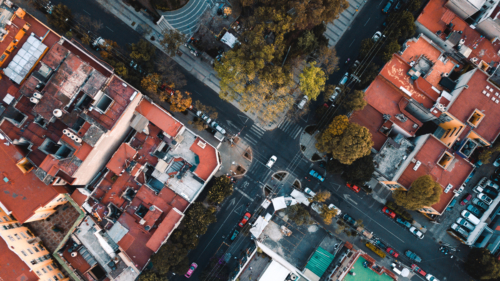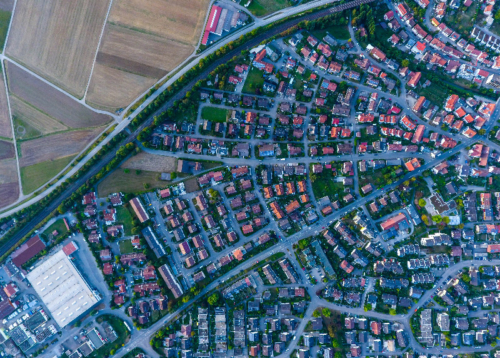
Splitting and Joining Centroids in Aimsun Next
November 2021: Geline Canayon explains a new feature that makes it much easier to adapt zone plans as you develop your model.
August 2017
By Dimitris Triantafyllos and Paolo Rinelli
Did you know that you can use Groupings of Centroids to split zones? The following workflow shows how to split a centroid into multiple centroids and distribute the trips generated and attracted with user-defined proportions.
First, use the Table View to ensure that all Centroids have been given different External ID values so that you can paste the trip values from the original OD Matrix into the one with split zones.
Figure 1. Verifying that all centroids have External IDs assigned
Duplicate the existing Centroid Configuration (“Eixample Barcelona – original”, see Figure 2) by dragging and dropping it into the Centroid Configurations folder. Once the new centroid configuration is duplicated, rename it (“Eixample Barcelona – split zones”, see Figure 3) and activate it by right-clicking on it and selecting Activate.
Figure 2. Duplicating and activating the split zone centroid configuration
To split one centroid into multiple centroids, follow these steps:
Figure 3. Creating new child centroids and setting the same External ID as the parent centroid
Create a new Grouping Category for Centroids. For each zone that you have split, create a Grouping and add to it all its child Centroids. Set the External ID of the grouping equal to the External ID of the parent Centroid so that you can paste trips later.
Figure 4. Grouping centroids and setting the same External ID
To set the split proportions between child Centroids of the trips generated and attracted by the parent Centroid, follow these steps:
Figure 5. New OD matrix with departure and arrival percentages to split parent centroid
Open the original matrix (AM Peak – original matrix in Figure 6) and set Headers: External ID and Grouping: None. Select all the matrix cells (Ctrl+A) and copy (right-click) the values.
Figure 6. Selecting and copying all cells of the OD matrix of the original centroid configuration
Open the split matrix (AM Peak – split zones in the figure below) and set Headers: External ID and Groupings: Centroids. Click on the first cell, right-click and select Paste.
Figure 7. Pasting the values to the OD matrix of the split zone centroid configuration
When pasting, Aimsun looks in the target OD Matrix for a Centroid (for the zones that haven’t been split) or Grouping of Centroids (for the zones that have been split) with the same External ID of the original Centroid, hence the importance of setting unique External IDs at the beginning, and of setting the External ID of the parent Centroid in the Grouping.
Moreover, when pasting a value in a grouped cell, Aimsun splits it among the cells that belong to the group by calculating a proportion based on their current values, so the values you introduced in step D have the effect of split proportions.
To be sure that process was succesful, check that the total trips of the two OD Matrices match, and also that the total generated and attracted by the split Centroid is equal to the total generated and attracted by its corresponding Grouping of Centroids.
Figure 8. Comparing the total trips of the original and split OD matrix.

November 2021: Geline Canayon explains a new feature that makes it much easier to adapt zone plans as you develop your model.

May 2014: Gabriel Funes discusses how to draw and filter objects in map mode.
SHARE
Aimsun Next 24
Aimsun (2024). Aimsun Next 24 User’s Manual, Aimsun Next Version 24.0.0, Barcelona, Spain. Accessed on: April. 16, 2024. [Online].
Available: https://docs.aimsun.com/next/24.0.0/
Aimsun Next 24
@manual {AimsunManual,
title = {Aimsun Next 24 User’s Manual},
author = {Aimsun},
edition = {Aimsun Next 24.0.0},
address = {Barcelona, Spain},
year = {2024. [Online]},
month = {Accessed on: Month, Day, Year},
url = {https://docs.aimsun.com/next/24.0.0},
}
Aimsun Next 24
TY – COMP
T1 – Aimsun Next 24 User’s Manual
A1 – Aimsun
ET – Aimsun Next Version 24.0.0
Y1 – 2024
Y2 – Accessed on: Month, Day, Year
CY – Barcelona, Spain
PB – Aimsun
UR – [In software]. Available:
https://docs.aimsun.com/next/24.0.0/